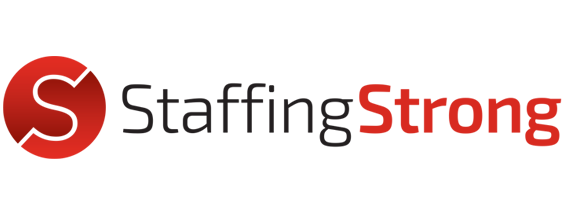
07 Jun 4 Secret Weapons in a Competitive Recruiting Market
Last year the pandemic jolted the job market from a job seeker’s market into an employer’s market with the world economies crashing in freefall and layoffs and furloughs accelerating. Hundreds of thousands of businesses closed their doors with millions of workers losing their jobs—all too often permanently.
The economy and workforce spun completely out of control, so understandably, you probably didn’t expect recruiting to be your biggest challenge in 2021.
The bad news is that hiring probably is your toughest hurdle ahead. Recruiting strategies and best practices are in full flux post-pandemic. While the American workforce has shrunk due to more parents leaving the workforce in droves during the COVID outbreak, there are fewer qualified candidates readily available and more job requisitions open as the economy accelerates back to normal.
Competing for quality talent in the new, new normal looks different. And job candidates who would normally be fazed by staying with an employer after a counteroffer for fear of losing their position later can be less resistant to avoiding change after a chaotic 2020.
So, you might be asking, what is fueling the shortage of workers? It turns out, a lot of different factors, including streamlined, reduced workforces, shifts to remote work, demographic and skill fluctuation in talent, pandemic-related hiring freezes and slowdowns on hiring approvals, and ultra-competitive candidate pools.
These four best practices can help you attract and hire more qualified candidates:
Be prepared to counter the counteroffer.
With more employers phasing reopenings and getting back to the normal pace of business, the last thing they want is to have to rehire for key positions. Instead of having to start over and recruit in a challenging talent market, managers and Human Resources departments are more apt to make counter offers or provide additional benefits.
When you budget for positions, make sure you pad in a necessary allowance for extra negotiations. It’s possible the first offer your candidate accepts will come back with a swift and competitive counter from their current company. So, be prepared to negotiate and ready to reinforce the unique benefits of joining your organization.
Be flexible with remote work accommodations.
While some employers are abandoning the physical office altogether, others are ready to bring employees back onsite. Phased office re-openings are rapidly underway across the country, and not all employees are ready to return.
According to a recent survey, some may never be. 90% of digital-born professionals (millennials and zennials born after 1981) don’t want to go back to the office. Period. Only 10% want to work in an office full-time again.
As CDC advisories fluctuate and restrictions are quickly being lifted, some professionals who have acclimated to the work-life balance and other benefits of working remote are ready to look for a fully remote position rather than return to the office. With that in mind, define a realistic long-term approach to working from home. Because while 60% of professionals in supervisory roles think workers should want back in the office, only 20% of their younger associates now dominating the workforce even want to return in a hybrid model (split between the office and working from home).
So, the more flexible your company can be around offering more or complete remote work, the more competitive you can be in enlisting talent.
Broaden the talent market beyond your area code.
Whether you’re dead set on bringing your new hires into your physical workplace or you’re willing to go fully remote to expand the talent available, you have options. While more workers are open to or even prioritizing fully remote opportunities—acclimated to collaborating in a connected workplace—others may also be open to relocating with the right incentives handy. Offering to cover the cost of relocation while giving your new employee ample time to move themselves and/or their family can help make any position more tempting with less hassle.
Reevaluate salary ranges.
It’s time to look at your salaries and see how they compare with other employers for new hires and existing employees to reduce the potential for turnover. As the talent pool has slimmed down in size, more companies are boosting salaries to gain a competitive edge while alleviating the burden on job candidates and employees who have seen a huge cost of living increase due to a simultaneous housing shortage that’s accelerated home purchase and rental costs to new highs.
With post-COVID delays, even vehicles and other long-term investments are more scarce and therefore more expensive. So, more employees may be looking to compensate by boosting their income to post-COVID levels.
Quality candidates are still out there.
If we learned anything from last year it’s that everything is open to change and that the workforce and talent are fast to evolve and acclimate. The businesses that have survived have become more resilient, job candidates have too.
Being able to attract quality, long-term employees with a powerful mission, friendly culture, and generous benefits has never been more important. Having a dedicated recruiting firm can help you achieve better outcomes—faster.
We can help.
At Staffing Strong, we are constantly monitoring hiring and salary trends to help our clients identify quality talent while offering competitive benefits and base salaries. Let’s talk about your hiring goals.
Meet the Author
Evelyn Vega is the Founder and President at Staffing Strong and the Past President of the Phoenix American Marketing Association. Since 1999, she’s made her career about supporting her clients in building meaningful careers and partnering with businesses in finding quality hires. In her free time, Evelyn sits on various advisory boards and enjoys practicing on her drum set!

Sorry, the comment form is closed at this time.